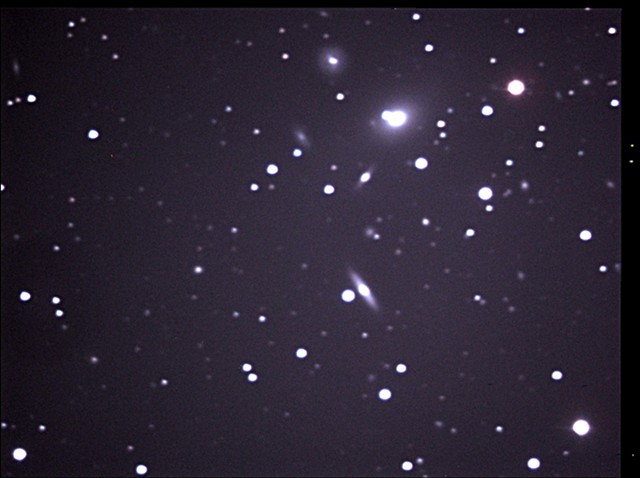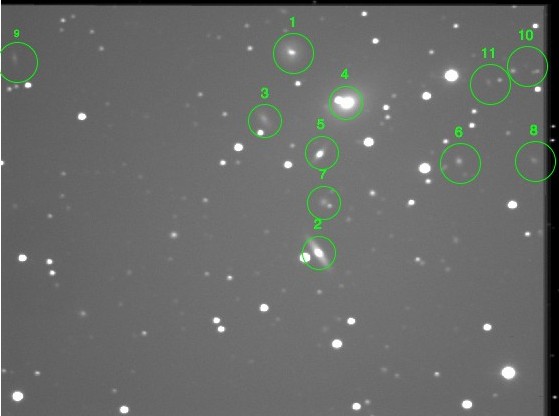
Contributed by: evilscientist
About a week ago I took an an astrophoto of a galaxy cluster, those of you who know me on Facebook have already seen the shot (some possibly on Twitter as well). Though I provided some basic information about the photo, I didn't really do much analysis of it. So this post is to provide that analysis about my first attempt at a really deep (for me) astrophoto. There's a copy of the photo after the cut.The shot above is the final image after processing (the one originally posted in other forums). Click on the image to enlarge to it's full size.
The basic information about the photo:
In my social media posts I had published some distance information, but of only one of the nearer galaxies. The distance to many of the galaxies in the shot is given below this image which shows the location of the galaxies I can find in the image:

It can be seen that even the close galaxies are a long way away. The farthest ones are well over one and a half billion light years away (distances are computed from data tables available at the SIMBAD and VisieR databases). So it's possible for amateur equipment to capture images of objects far-far away. That being said the galaxies in the Hubble Deep Field are upwards of 10 billion light years away. The universe is a big place indeed!
I've also included in the data table the visual apparent magnitudes (how bright they appear to us here on Earth). For comparison the bright star Vega has an apparent magnitude of about 0, the average person at a dark site with dark adapted eyes can see stars as dim as 6th magnitude. The dimmest galaxy captured is at apparent magnitude of 17.6. This is about 43 000 times fainter than what can be seen with the unaided human eye. Not bad for amateur equipment with relatively low exposure times!
Comments (0)
Evilness
http://www.evilscientist.ca/article.php?story=2012082922360297